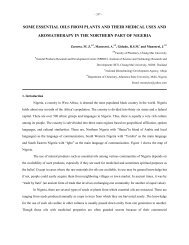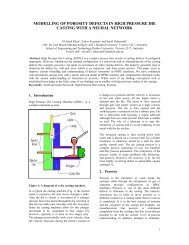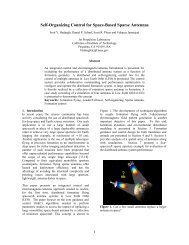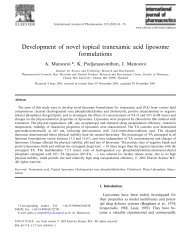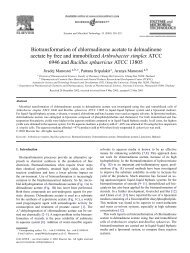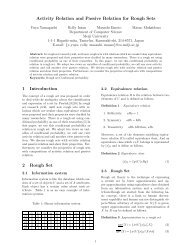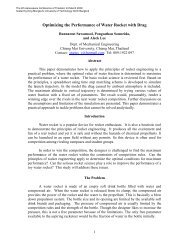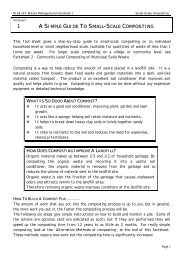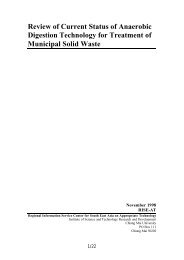COMMUNITY LEVEL COMPOSTING OF MUNICIPAL SOLID WASTE
COMMUNITY LEVEL COMPOSTING OF MUNICIPAL SOLID WASTE
COMMUNITY LEVEL COMPOSTING OF MUNICIPAL SOLID WASTE
Create successful ePaper yourself
Turn your PDF publications into a flip-book with our unique Google optimized e-Paper software.
RISE-AT Waste Management Factsheet 2<br />
Community Level Composting of Municipal Solid Waste<br />
1.5<br />
1.7<br />
2.0<br />
Figure 4: The Finished Pile<br />
This system involves extra work in building the aeration tunnels but can benefit from a<br />
reduced composting time.<br />
Building The Pile:- The sorted, chopped waste should be piled up but should not be<br />
compacted as this will remove oxygen from the mixture. Water needs to be added to<br />
ensure that the waste is sufficiently wet and that the moisture is evenly distributed. One<br />
method of ensuring this is to add water after each layer of waste, about 30cm thick, has<br />
been added to the pile. The water content should be 45-50% by weight of the pile.<br />
To check the water content of the waste, pick up a handful of the material and squeeze.<br />
It should feel damp and be sufficiently wet that one or two drops of water are produced.<br />
STEP 2 - HOW TO MONITOR THE PILE<br />
The waste in the windrows needs to be turned regularly to ensure sufficient air is mixed<br />
with the material. This will keep any odors produced to a minimum. If there is a lack of<br />
oxygen in the pile it will begin to smell of bad eggs. Regular turning will also increase the<br />
decomposition rate of the waste.<br />
The temperature of the pile can be monitored and this will determine when it should be<br />
turned. The method for doing this is described below<br />
Page 11



